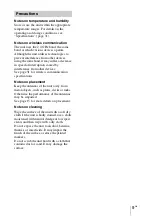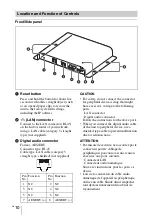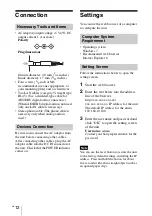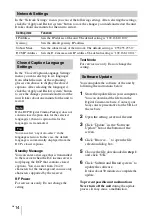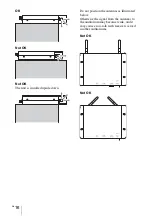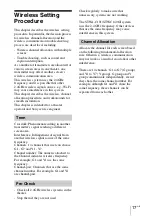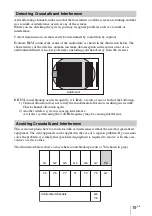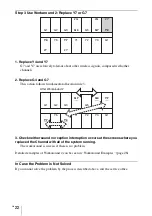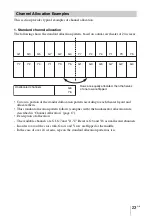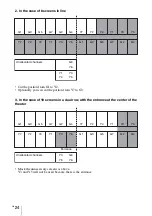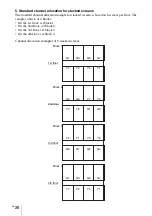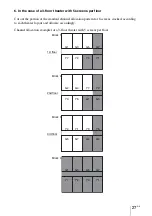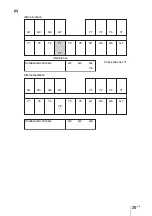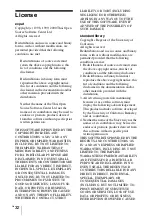
23
GB
This section provides typical examples of channel allocation.
1. Standard channel allocation
The following shows the standard allocation pattern, based on a dual-row theater of 24 screens.
• Cut out a portion of the standard allocation pattern according to each theater layout and
allocate them.
• This standard allocation pattern follows (complies with) the fundamental allocation rule
described in “Channel Allocation” (page 17).
• Description of allocation:
- The available channels are G1-G7 and Y1-Y7. Reserve G6 and Y6 as unallocated channels.
- In order to avoid the cross talk, G row and Y row are flipped at the middle.
- In the case of over 24 screens, repeats the standard allocation pattern as it is.
Channel Allocation Examples
Rows are equally allocated, then the halves
of one row are flipped.
Unallocated channels
G1
G3
G5
G7
G2
G4
Y7
Y2
Y4
Y1
Y3
Y5
Y7
Y2
Y4
Y1
Y3
Y5
G1
G3
G5
G7
G2
G4
G6
Y6

